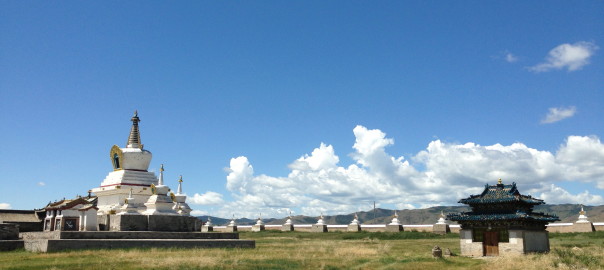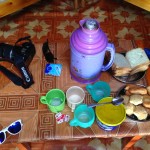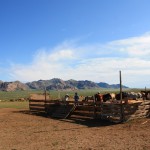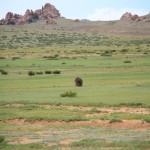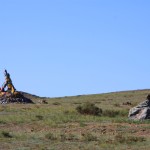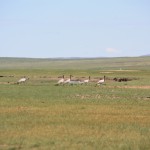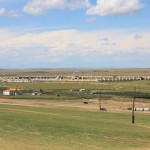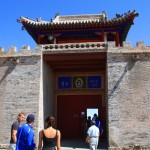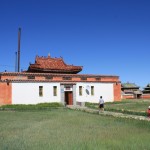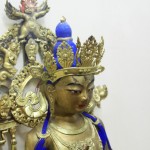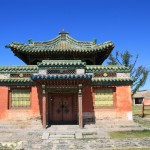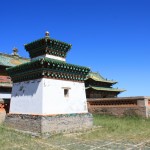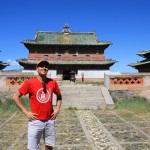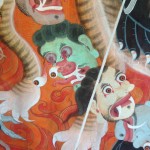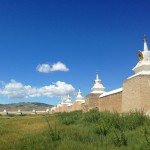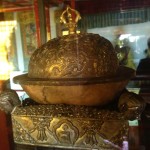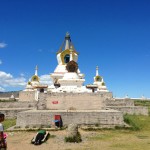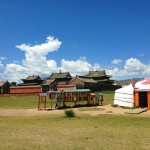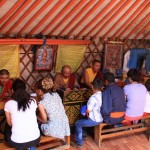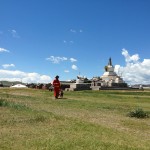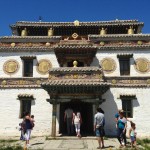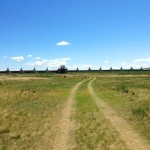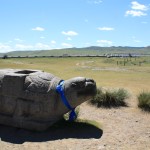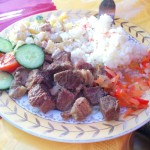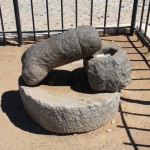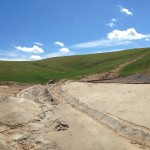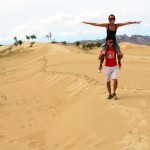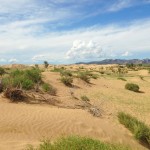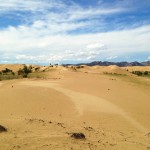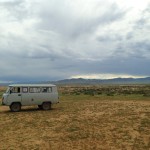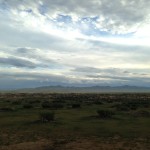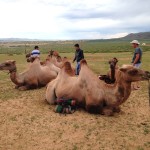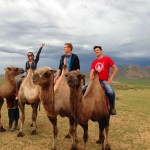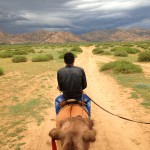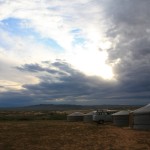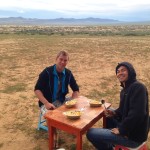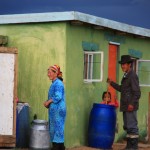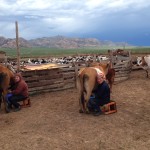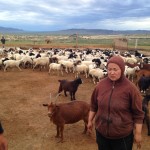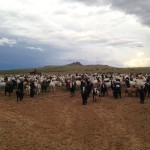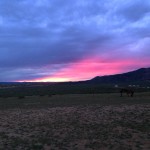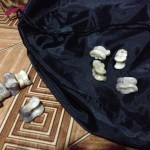Sleeping in a ger was not as comfortable as I had originally hoped. As the structure is simply set up on the ground there is no seal to the outside environment, meaning bugs get in, specifically a type of small black beetle.
I woke up several times throughout the night to flick off the crawlers I found all over my body. Luckily, they didn’t bite.
After a breakfast of bread, toast and jam plus milk tea, we loaded up into the car for our day trip.
The drive took about two hours through some bumpy dirt roads.
Karakorum
Once an ancient capital during Genghis Khan’s time in the 13th century, Karakorum is now a part of a World Heritage Site (Orkhon Valley). The main city nearby is the not-so-aesthetically-pleasing Kharkhorin.
Erdene Zuu Monastery is said to be the first Buddhist worship ground of Mongolia and built with the ruins of Karakorum. Now it is still an active monastery and museum.
An English speaking guide gave us a tour of the site. She took us from room to room explaining the details of the original wall paintings from the 17th century and the meanings behind the buddhist deities.
After the guided tour, we went into a ger where buddhist monks prayed and visitors gave alms or prayed along-side them.
The walled area was quite bare and only a few structures survived the 1939 communist “purge”. Many Mongolians in ceremonial clothing were visiting with their families, stopping at the temples to pray. I only counted a few tourists while we were there.
After our exploration, we went across the main gate for lunch at a small restaurant. There were many shops and even a guy offering pictures with a falcon or vulture.
Then we drove to up the hill to see the Kharkhorin Rock, a stone penis aimed upwards to a valley in the hills that resembles a woman’s thighs. We were told that people pray here for a child. The pathway was lined with souvenir stands, which we quickly browsed.
We then took an uneventful drive to our next stop.
Semi-Gobi Desert
Near our camp was a section of the Gobi Desert. This area was referred to as “Semi-Gobi” because it is a mix between the Mongolian Steppe and desert.
Right off the road were several tourist camps with camel and horse riding available. We parked and took a short hike into the sand dunes of the desert.
Back at camp, our guide offered us some Arak or fermented mare’s milk… How could we refuse?
The alcohol content was very low and it tasted like yogurt that went a bit off. Our only issue was, we couldn’t stop drinking it! To be polite we would finish our bowl and our host would pour more. It was a never ending cycle and eventually we gave in and left the ger without emptying our bowl.
Camel Ride
We ended our day with a short camel ride. We rode the two-humped Bactrian camel, which is native to Central Asia. It is the rarer of the camels and considered “critically endangered”.
The roundabout tour into the valley and back was relaxing, though not very comfortable. We were again led around by our guide but that was fine as we couldn’t go very fast anyway and the camels were easily spooked by the few cars that drove by. The camels also had a serious flatulence problem which made the journey even less appealing.
For dinner we had basically the same meal as last night, but with noodles instead of rice.
As the sun was setting, we noticed the family working on farm duties. The women were milking the cows as the men herded the goats and sheep into the pen. Chris and I went to help out, but all we could do was help operate the gate to the pen. After they separated the herd into two groups the job was completed.
We didn’t see much of the sunset as the clouds blocked the view.
Shagai
Retiring to our ger, Jagaa joined us and taught us some traditional Mongolian games. He brought out a pouch containing Shagai or sheep knuckles. In the dimly-lit single bulb tent, we learned to distinguish the sides of the knuckle representing horse, sheep, goat, or camel. We played a “horse race” game similar to a dice game, where you toss a knuckle and if it lands on your animal, your marker moves until someone passes the finishing line and wins.
We then learned a more complex game where each player tries to collect the most pieces of knuckle bone, by tossing a handful onto the table and flicking the same animal types at each other. The ones you hit, you collect and the person who collects them all wins.
We thanked our friend Jagaa and bid him good night. That summed up our fun day of new experiences. We tucked ourselves in, knowing we had to go back to Ulan Bator tomorrow and waited for our bed beetles to join us…
